Hey, foodies! I’ve got a super delicious and easy-to-follow recipe for you today – “Homemade Plain Bagel”. Trust me, you’re gonna wanna bookmark this one.
I’ve always been a huge fan of bagels, and making them from scratch is just so much better than buying them from the store. With this recipe, you can create a batch of mouth-watering, perfectly chewy bagels that are just as good (if not better) than the ones you’d find in a New York deli.
All you need is some flour, yeast, sugar, salt, and water, and you’re good to go. My Step-by-Step instructions are super simple to follow, so even if you’re not an experienced baker, you’ll be able to whip up some amazing bagels in no time.
And the best part? Once you’ve made these homemade plain bagels, you can get creative and add your favorite toppings or flavors. Cream cheese, jam, bacon, eggs, you name it! The possibilities are endless.
So, if you’re ready to take your breakfast game to the next level, give my “Homemade Plain Bagel” recipe a try. Your taste buds will thank you.
Contents
Why You Will Love This Homemade Plain Bagel Recipe
Chewy and Flavorful: A golden-brown crust with a slight crunch, giving way to a chewy, doughy interior. The simplicity of our plain bagel highlights the rich flavors of perfectly balanced ingredients.
Aroma Therapy: As they bake, your kitchen will be filled with the inviting aroma of freshly baked bread. This sensory experience alone is reason enough to give our recipe a try.
Delight for All Ages: Homemade Plain Bagels have an appeal that transcends generations. Whether it’s breakfast for the family or a special treat for yourself, these bagels bring smiles all around.
Nostalgic Comfort: Transport yourself to the cozy bakeries of your favorite memories with each bite. These bagels have a way of evoking that sense of comfort we all cherish.

Homemade Plain Bagel Ingredients and Equipment
| Ingredients | Equipment |
|
|
Homemade Plain Bagel Instructions
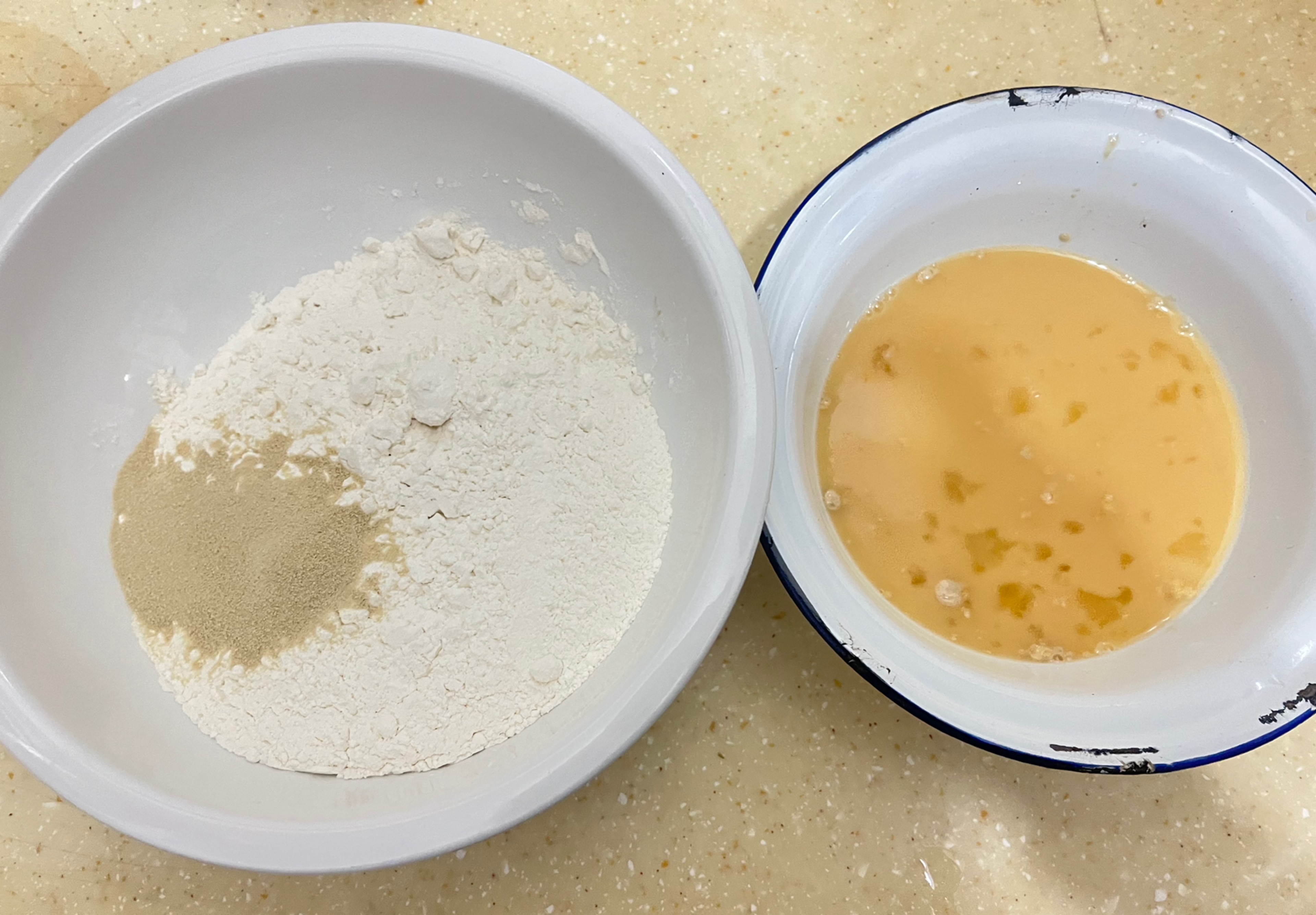
Step 1First things first, let’s gather all our ingredients and measure them out according to the recipe. Mix everything together and stir until you have a nice, floury texture. Then, get your hands in there and start kneading the dough until it’s smooth and pliable. |
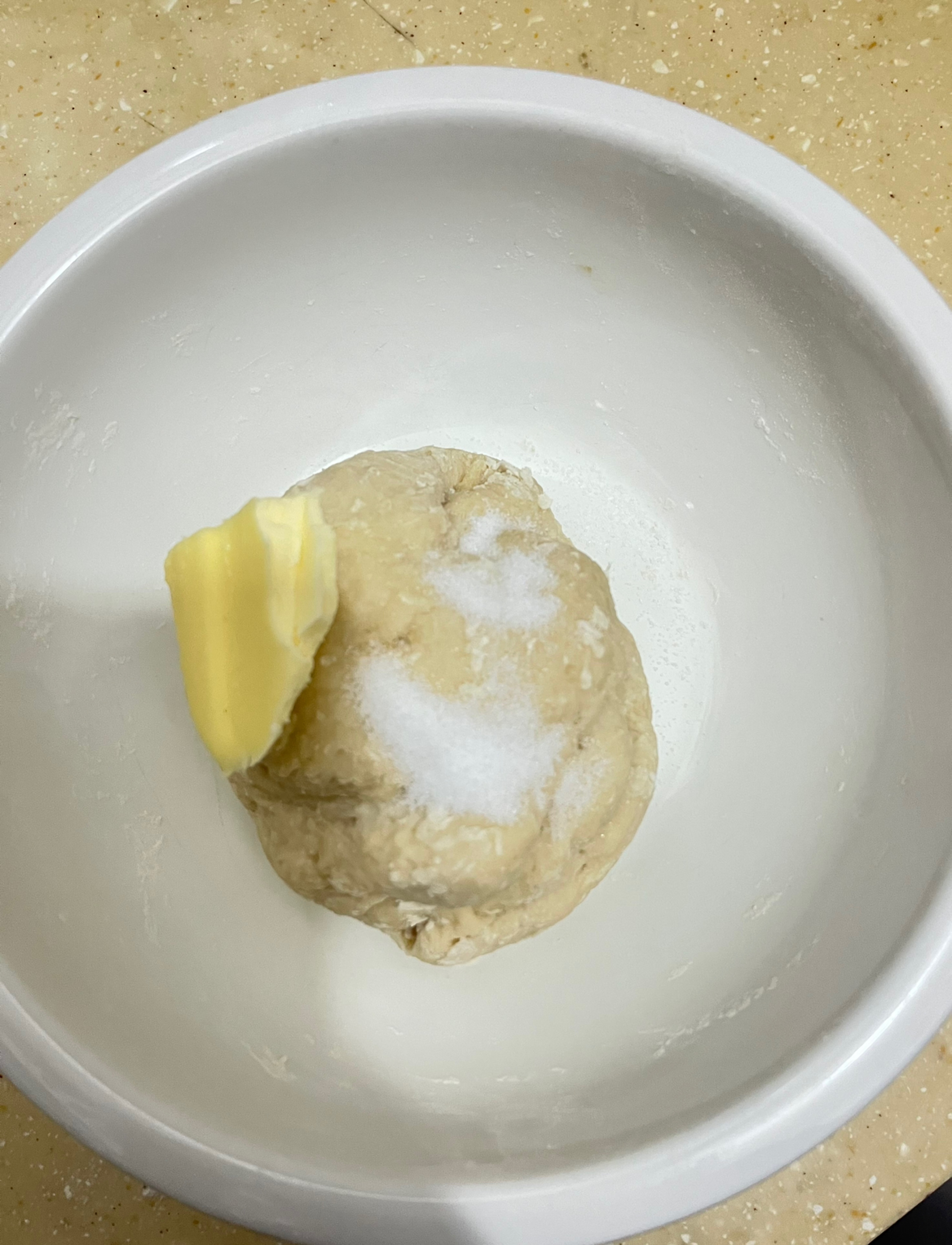
Step 2Once your dough is looking good, add in some salt and butter and continue to knead it by hand. You want to make sure that the butter gets fully incorporated into the dough, so keep at it until you have a nice, smooth consistency. Don’t worry about using gloves or cling film – bagels are forgiving! |
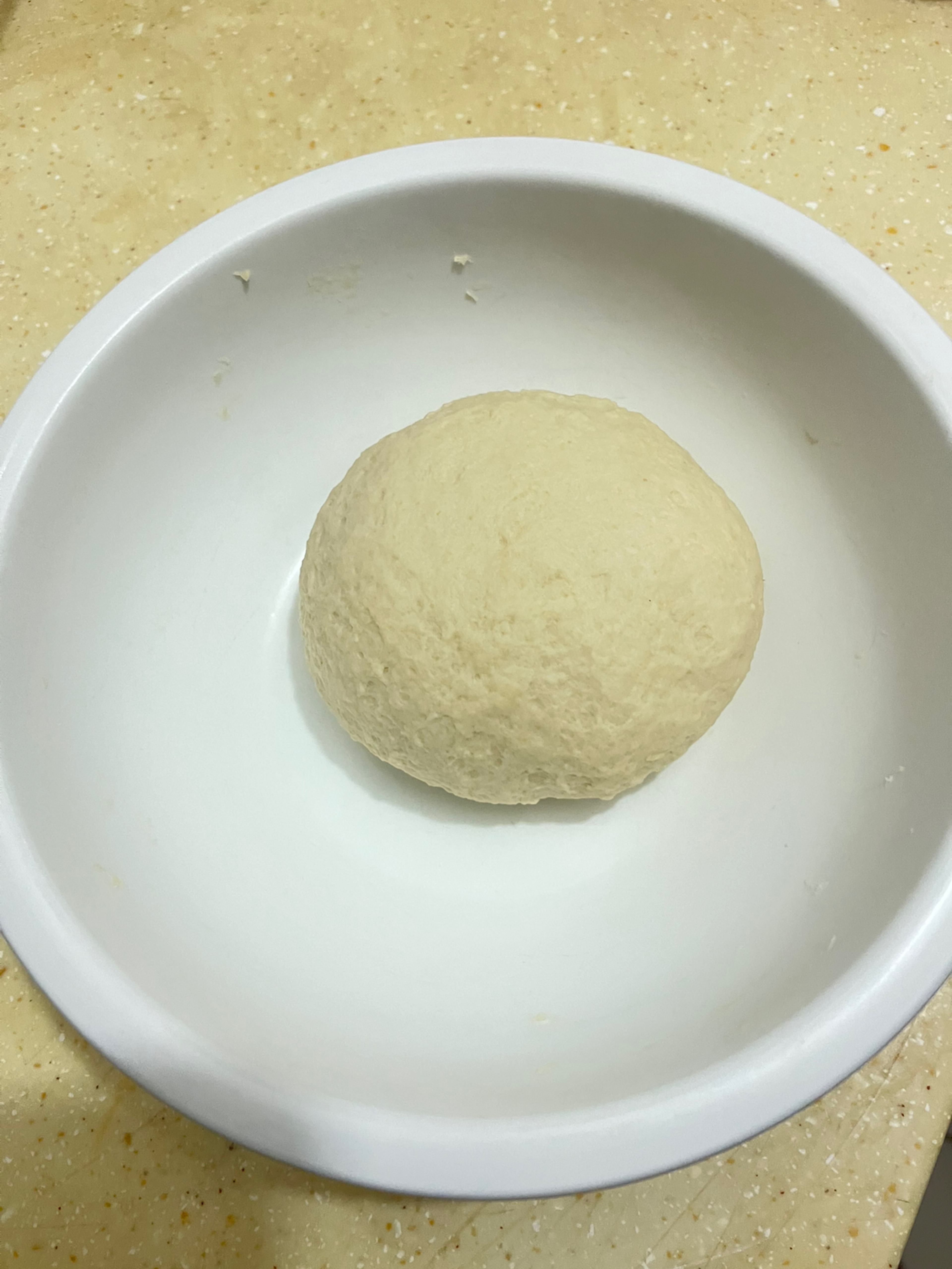
Step 3After kneading, you can let the dough rest for half an hour if you have the time. If not, feel free to skip this step and move straight on to dividing the dough into quarters. |
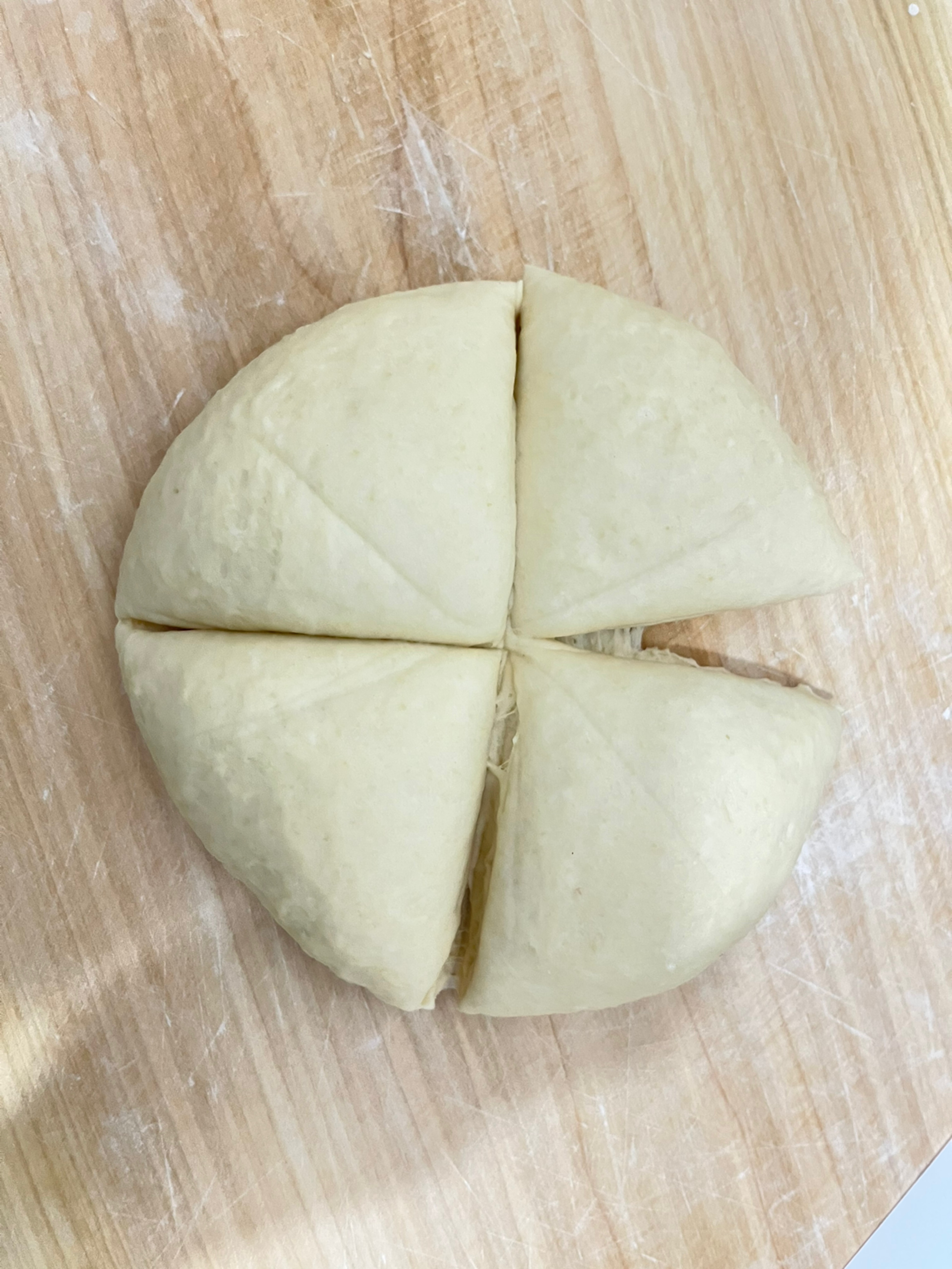
Step 4Split your dough into four equal pieces. |
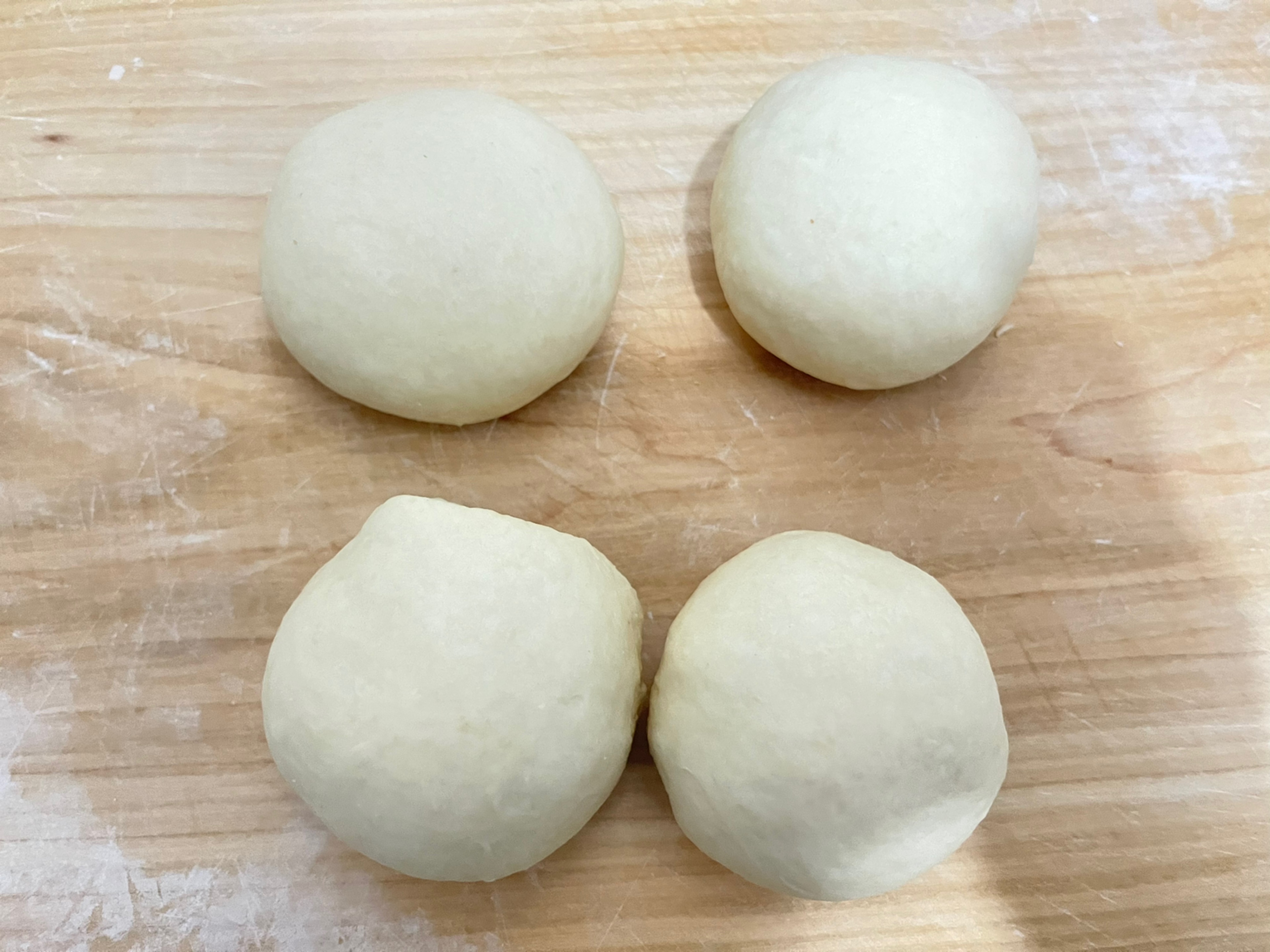
Step 5Take each piece and let it rest for another twenty minutes or so. This will give it time to relax and make shaping easier. |
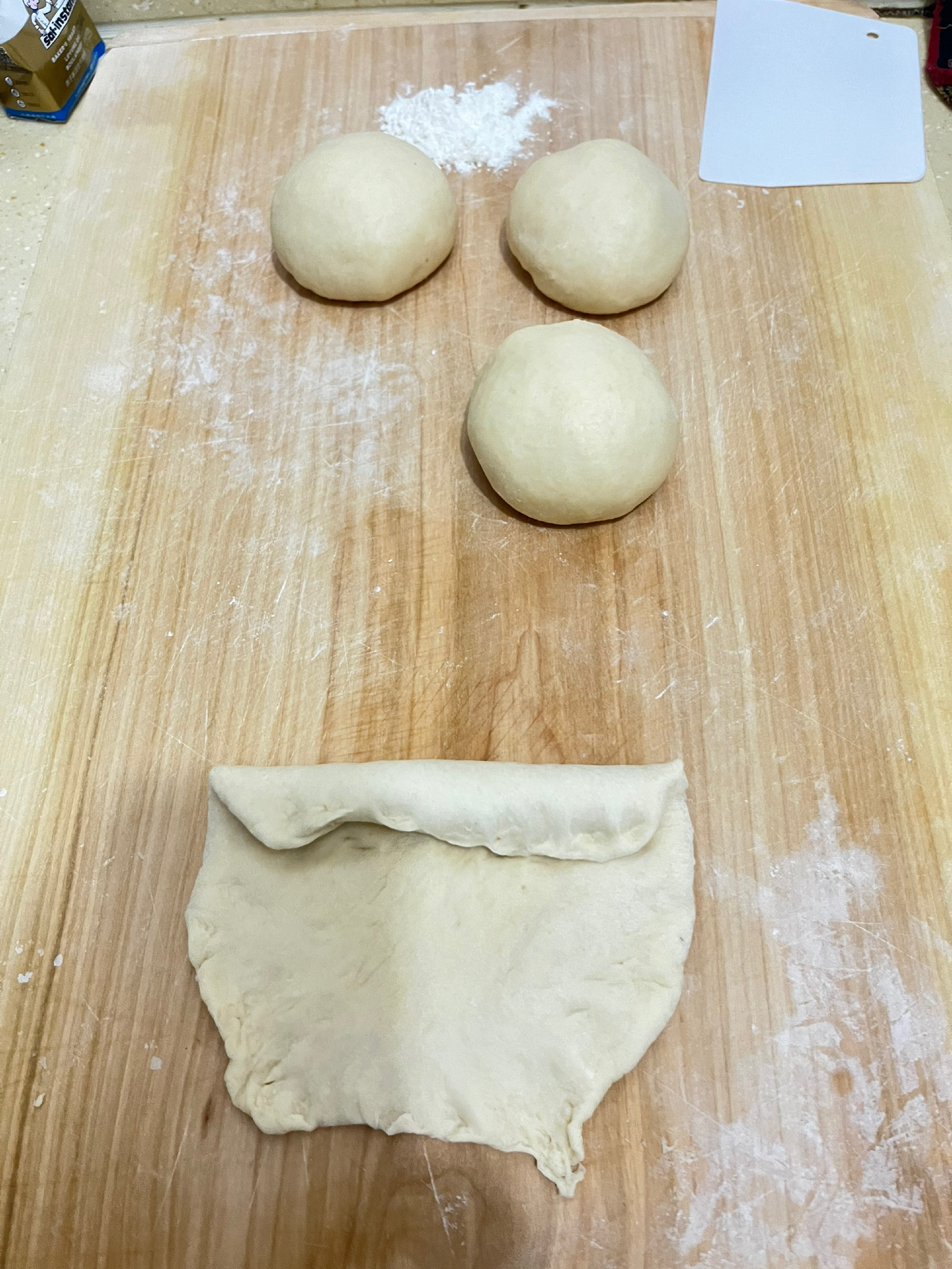
Step 6To shape your bagels, roll out each piece of dough and organize it into a rectangle. Press it thin at the bottom, then roll it up from top to bottom. Rub it down with your hands to make it nice and long, then flatten one end with a rolling pin. Wrap the other end around to make a circle and pinch the openings tightly closed. |
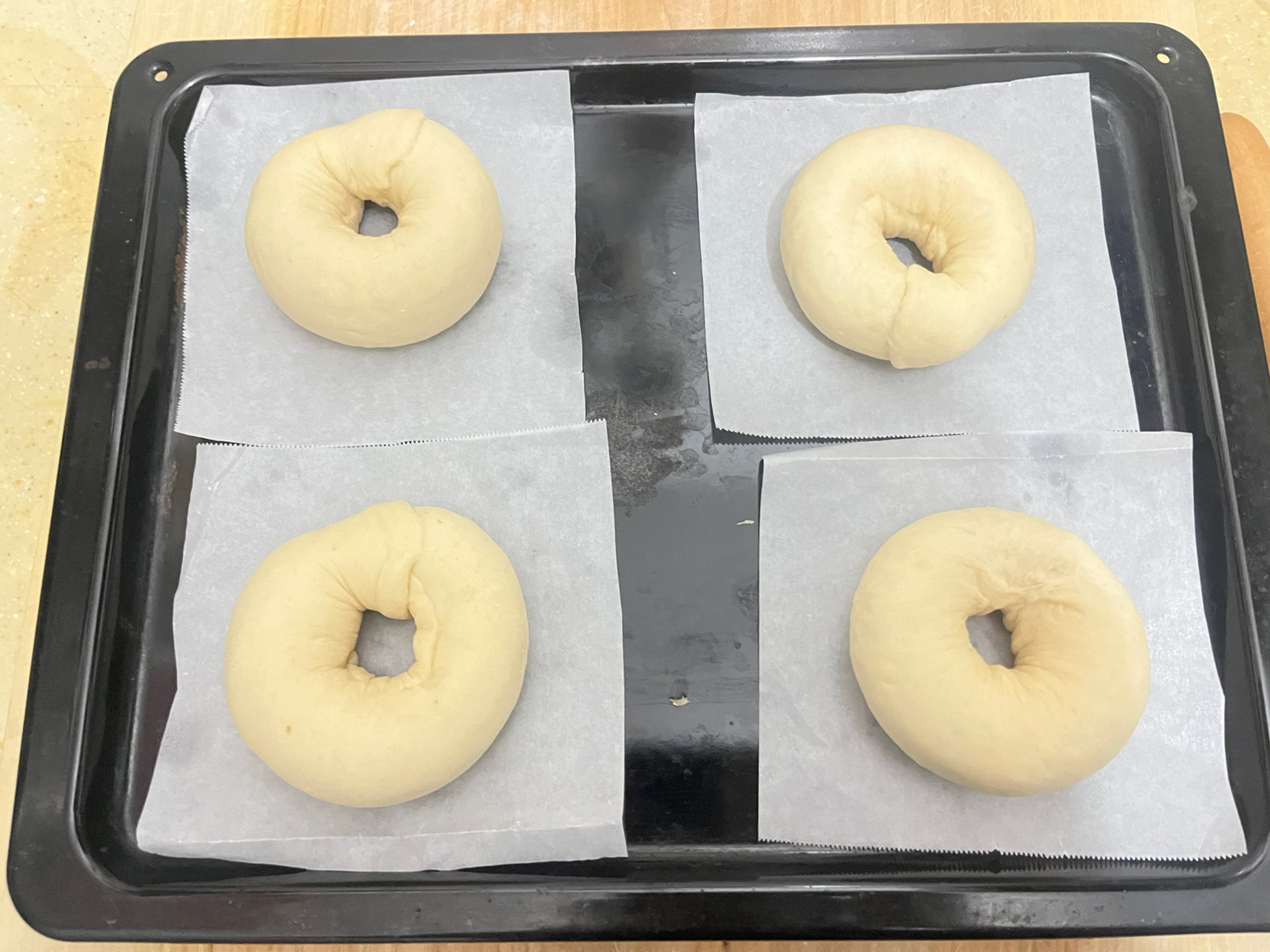
Step 7Place your bagels on a piece of oiled paper and let them rise in the oven for about 30 minutes. They should get about 1.5 times larger. |
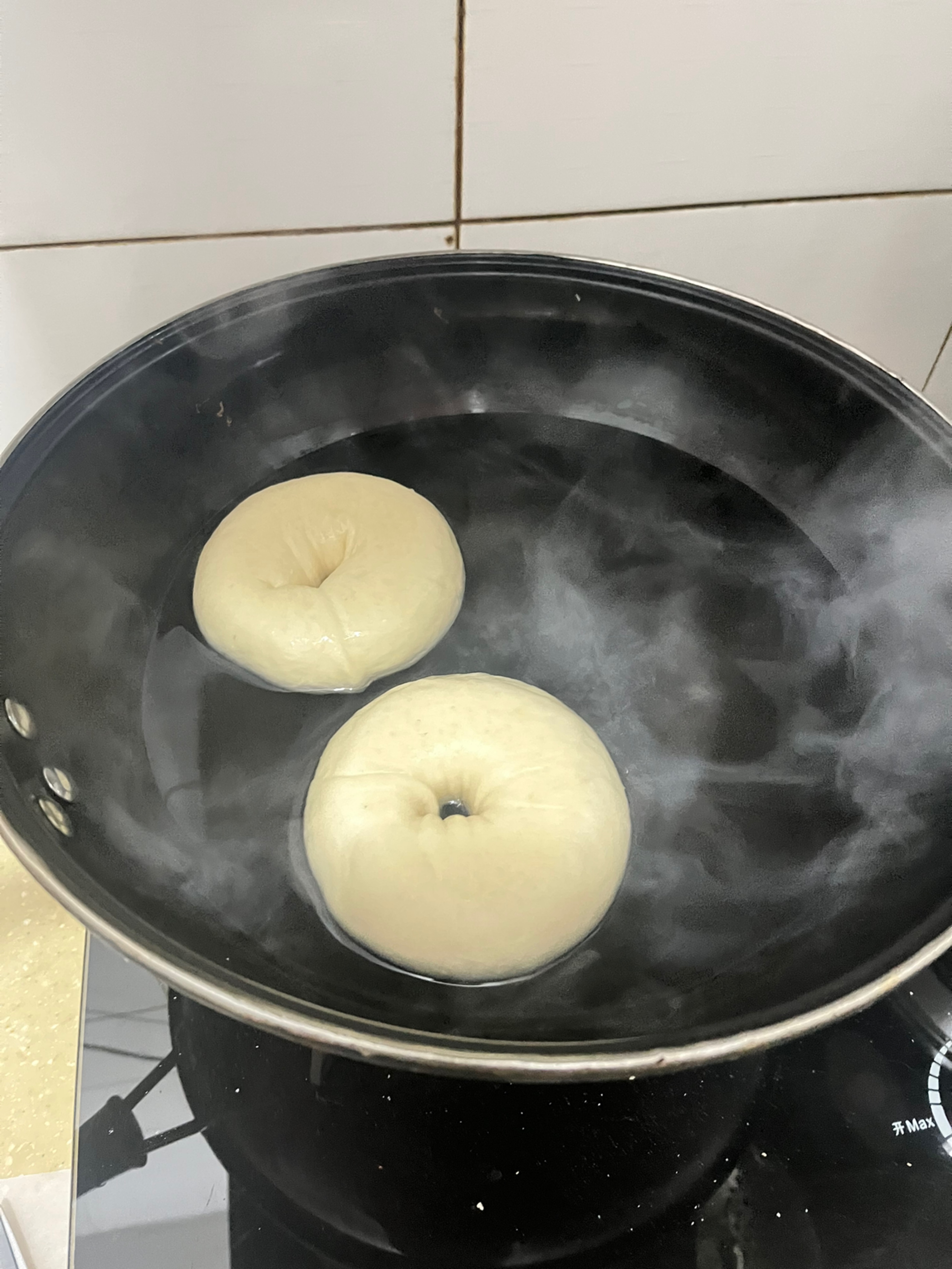
Step 8Boil 1000ml of water and 50g of sugar together, then turn off the heat. Cook each side of the bagel in the sugar water for 30 seconds, then remove them and place them on the baking tray. |
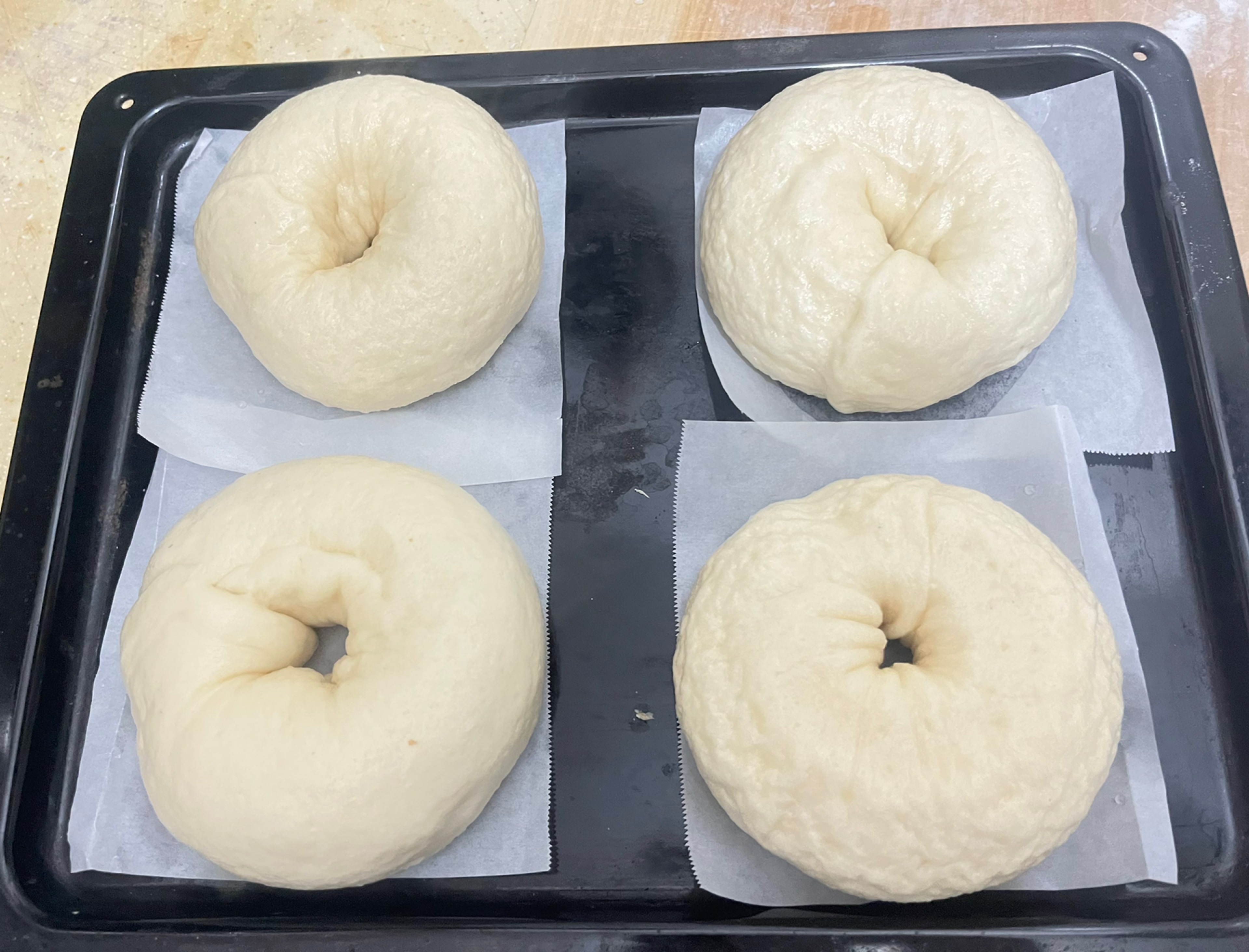
Step 9The sugar water serves to give your bagels a nice, even color. |
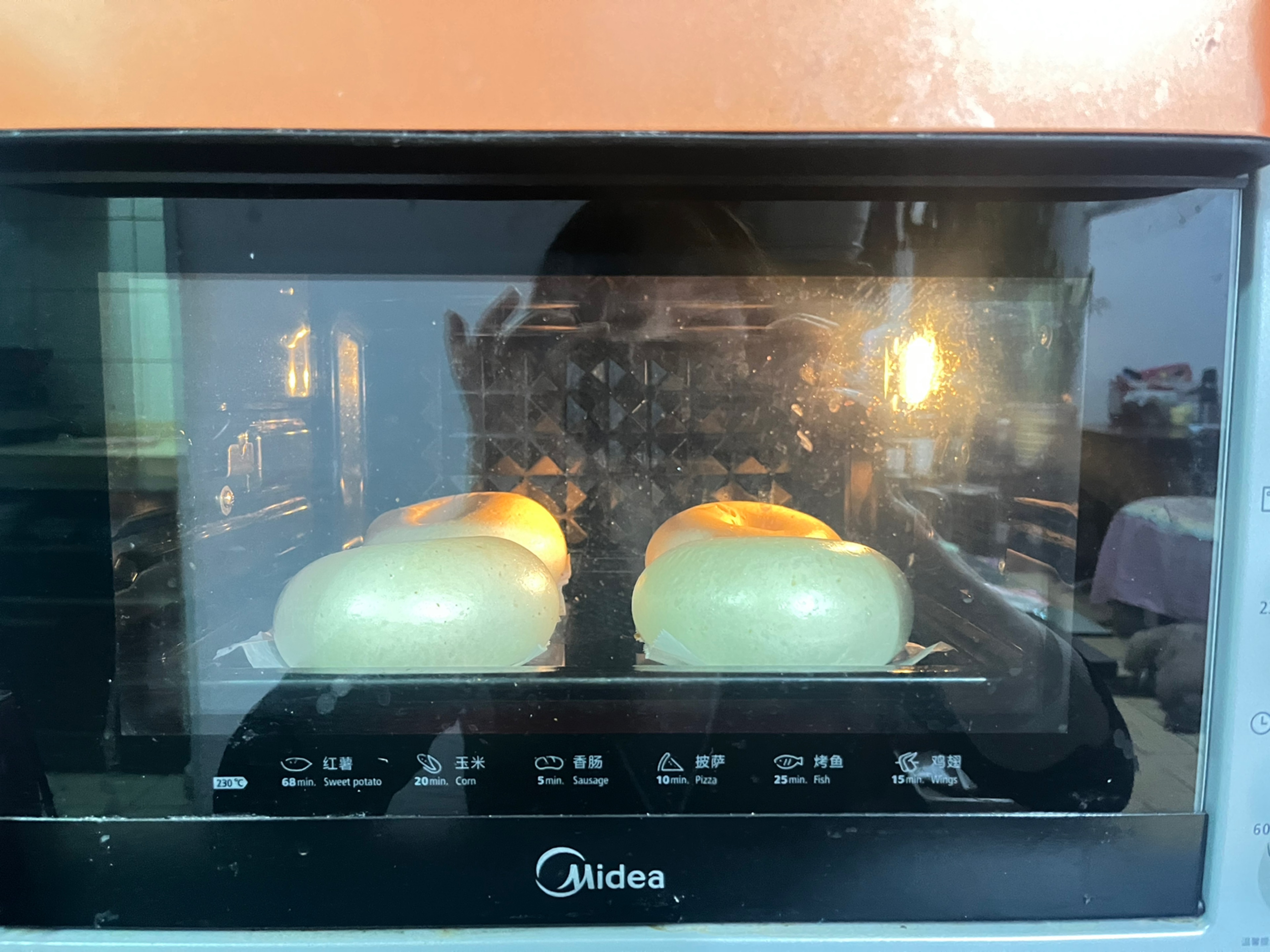
Step 10Preheat your oven to 357°F degrees, then bake your bagels at 320°Fdegrees for about 20 minutes. If your oven is 32 liters like mine, that should do the trick! |
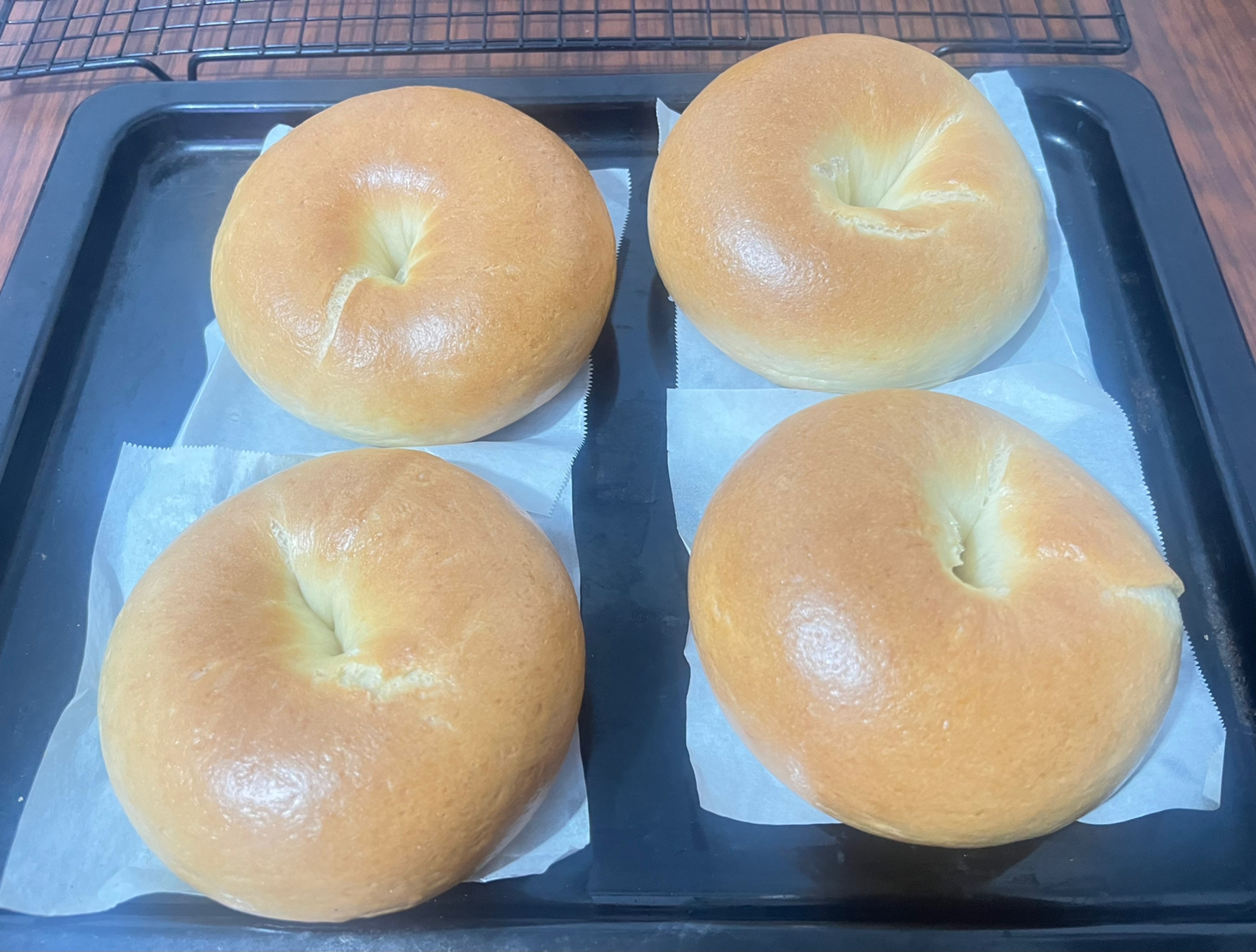
Step 11Once your bagels are done, take them out of the oven and let them cool on a wire rack. |
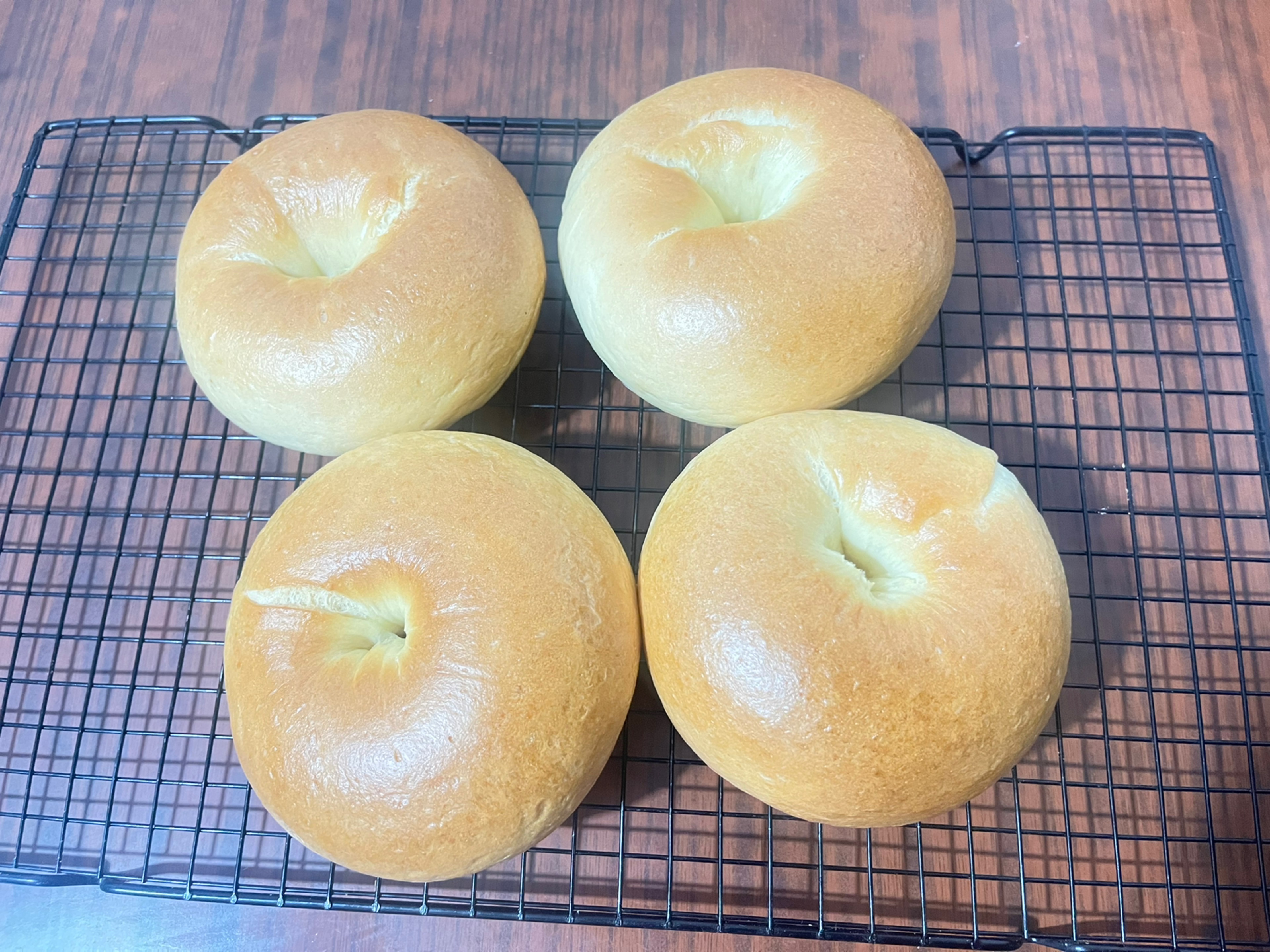
Step 12Take a look at those bagels – aren’t they just gorgeous? I’m feeling pretty proud of myself right about now! |
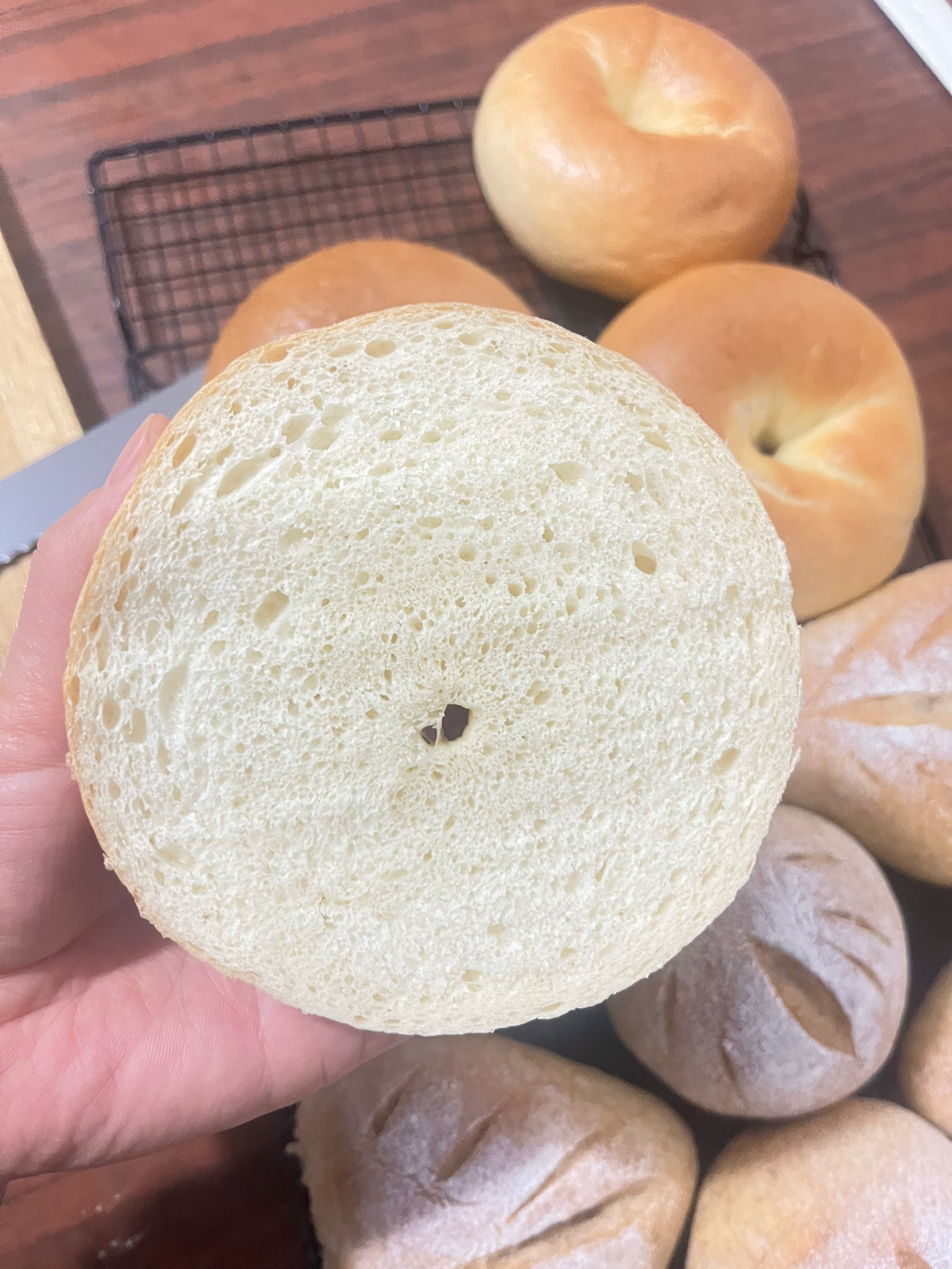
Step 13Cut open your bagels and check out those nice, even internal pores. This is the sign of a job well done! |
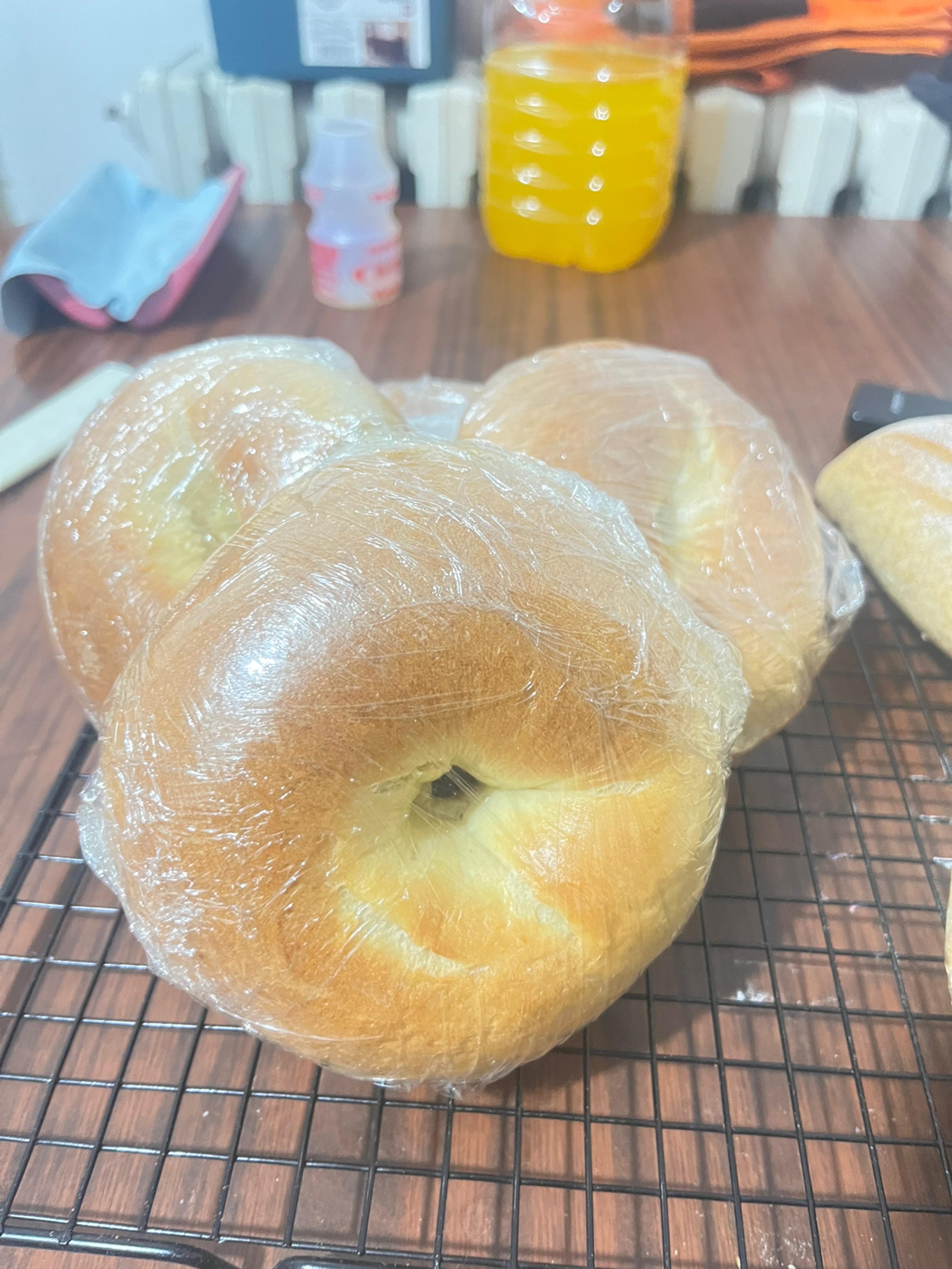
Step 14If you can resist eating them all in one go, wrap your bagels in plastic wrap and store them at room temperature for up to three days. If you’re not going to eat them that quickly, pop them in the freezer instead. To reheat them, just thaw them out and spray them with a little water before baking for three or four minutes! |

Homemade Plain Bagel Serving Suggestions
Serving Ideas
- Classic Cream Cheese: Spread a generous layer of cream cheese on your plain bagel. You can also opt for flavored cream cheeses like chive, garlic herb, or smoked salmon.
- Bagel Sandwich: Create a delicious sandwich by stacking sliced deli meats, fresh vegetables, and your favorite spreads between two halves of the bagel.
- Avocado Smash: Top your bagel with mashed avocado, a sprinkle of salt and pepper, and perhaps a drizzle of olive oil for a healthy and satisfying option.
- Bagel and Lox: For a classic treat, layer smoked salmon, cream cheese, red onion, capers, and fresh dill on your bagel.
- Egg Delight: Scramble or fry an egg and place it on the bagel. Add cheese, bacon, or spinach for a hearty breakfast or brunch option.
- Nut Butter Boost: Spread almond butter, peanut butter, or any nut butter of your choice on your bagel. Add sliced banana or a drizzle of honey for sweetness.
Beverage Pairings
- Coffee: A classic pairing, a cup of coffee complements the plain bagel’s simplicity. Try it with a latte, cappuccino, or your preferred coffee style.
- Tea: Opt for black tea like English breakfast or Earl Grey, or try herbal teas like chamomile or peppermint for a soothing match.
- Fresh Juice: Enjoy a glass of fresh orange juice, apple juice, or a refreshing fruit blend to balance the savory bagel.
- Smoothies: Blend up a fruit smoothie with your favorite fruits, yogurt or milk, and a touch of honey or maple syrup.
- Iced Drinks: On a warm day, indulge in an iced coffee, iced tea, or even an iced latte for a cool and satisfying experience.
- Sparkling Water: For a light and bubbly option, pair your plain bagel with a glass of sparkling water, optionally infused with a slice of lemon or lime.
Remember, the beauty of the plain bagel lies in its versatility. You can match it with a wide range of spreads and beverages to suit your taste and preference. Enjoy your Homemade Plain Bagels with these delightful accompaniments!
Homemade Plain Bagel Storage and Shelf Life
Proper storage is key to maintaining the freshness and quality of your Homemade Plain Bagels. Here’s how to store them and understand their shelf life

Storage
- Short-Term (1-2 Days): If you plan to consume the bagels within a day or two, store them at room temperature in an airtight container or a resealable plastic bag. Make sure they are properly sealed to prevent moisture from getting in.
- Refrigeration (3-5 Days): For slightly longer storage, place the bagels in a resealable plastic bag and store them in the refrigerator. This can help prevent mold growth and keep them fresh for a few more days.
- Freezing (2-3 Months): To extend the shelf life of your Homemade Plain Bagels, freeze them. Wrap each bagel individually in plastic wrap or aluminum foil to prevent freezer burn, and then place them in a freezer-safe bag. They can be frozen for about 2 to 3 months.
Shelf Life
The shelf life of Homemade Plain Bagels depends on how you store them:
- Room Temperature: Bagels stored at room temperature are best consumed within 1 to 2 days. After that, they might become stale or dry.
- Refrigeration: In the refrigerator, bagels can maintain their quality for about 3 to 5 days. However, their texture might change slightly, and they could become denser.
- Freezing: When properly frozen, Homemade Plain Bagels can maintain their taste and texture for 2 to 3 months. Beyond that, they might still be safe to eat, but their quality could diminish.
Tips for Best Results
- Before freezing, ensure that the bagels are completely cooled. Moisture in the bag can lead to freezer burn.
- Consider slicing the bagels before freezing. This makes it easier to defrost individual slices and toast them without thawing the whole bagel.
- Label the freezer bag with the date of freezing. This helps you keep track of their freshness.
- When reheating frozen bagels, toast them directly from the freezer or briefly microwave them before toasting to restore their freshness.
While the texture might not be exactly the same as freshly baked bagels, freezing is an excellent way to enjoy your Homemade Plain Bagels over an extended period without compromising too much on quality.
Homemade Plain Bagel Cooking Tips and Tricks

Proper Yeast Activation
Make sure the water you use to activate the yeast is at the right temperature, around 110°F (43°C). Too hot water can kill the yeast, while too cold water might not activate it properly.
Balancing Salt
Remember that salt can slow down yeast activity. It’s a good idea to add the salt after you’ve mixed the yeast mixture with the flour to avoid affecting the yeast’s performance.
Egg Usage
The eggs in the recipe might be used for an egg wash on top of the bagels before baking. You can beat one of the eggs and use it for this purpose. Alternatively, they might be used in the dough itself for extra richness and flavor. Refer to your recipe for specific egg usage.
High-Gluten Flour
High-gluten flour is crucial for achieving the chewy texture typical of bagels. If you can’t find high-gluten flour, you can try mixing bread flour with vital wheat gluten to achieve a similar effect.
Kneading Technique
Knead the dough until it’s smooth and elastic. It should stretch without tearing. You can perform the “windowpane test” by gently stretching a small piece of dough between your fingers; if you can see a thin, translucent membrane, the dough is adequately kneaded.
Butter Incorporation
Incorporate the butter gradually while kneading, once the dough has started to come together. This ensures even distribution of fat throughout the dough.
Resting Time
Give the dough sufficient time to rest after kneading and shaping. This allows the gluten to relax, making the dough easier to work with and resulting in better texture.
Shaping Tips
When shaping the bagels, use a gentle but firm touch. Roll the dough into a ball, flatten it, and use your thumb to create the hole. Stretch the hole wider than desired, as it will contract during boiling and baking.
Boiling Considerations
When boiling the bagels, make sure the water is gently simmering, not vigorously boiling. A tablespoon of sugar in the boiling water can contribute to the bagels’ golden color and flavor.
Egg Wash Application
Brush the beaten egg mixture onto the bagels before baking. This adds shine and color to the final product.
Baking Time and Temperature
Bake the bagels at the temperature and time specified in your recipe. This is usually around 375-400°F (190-200°C) for about 20-25 minutes or until they turn golden brown.
Cool for Optimal Texture
Allow the bagels to cool on a wire rack before slicing into them. This prevents the steam inside from making the interior overly moist.
Frequently Asked Questions

Q: What is the ideal water temperature for activating the yeast?
A: Warm water between 110-115°F is best to bloom and activate the dry yeast. Too hot will kill it.
Q: Can I substitute all-purpose flour instead of bread flour?
A: Bread flour is recommended for chewy texture, but you can use all-purpose in a pinch. Just don’t expect as much rise.
Q: Is bread flour the same as high-gluten flour?
A: Yes, bread flour and high-gluten flour are the same thing and can be used interchangeably.
Q: How long should the dough be kneaded?
A: Knead by hand or machine for 8-10 minutes until the dough becomes elastic and passes the windowpane test.
Q: What is the purpose of boiling the bagels before baking?
A: Boiling gelatinizes starches and gives bagels their signature chewy crust and shine.
Q: Can I skip the egg and just use water instead?
A: Eggs provide structure, richness and binding, so they are recommended. But you can omit in a pinch.
Q: How do I know when the bagels are fully baked?
A: Bagels are done when deeply golden brown and they sound hollow when tapped on the bottom.
Q: How should I store leftover bagels?
A: Allow to cool completely before storing in a zip top bag at room temp up to 3 days or freezing for months.
Q:How can I make the bagels shiny and golden on top?
A: Use an egg wash before baking to achieve a shiny and golden-brown finish. Beat an egg with a splash of water and brush it onto the tops of the bagels just before baking.
Q: Can I add flavorings like cinnamon or raisins to the dough?
A: Absolutely! Feel free to experiment with flavorings like cinnamon, raisins, or other dried fruits, nuts, or even chocolate chips. Incorporate these ingredients during the mixing or kneading process.
Q: Can I make smaller or larger bagels?
A: Yes, you can adjust the size of the bagels. Keep in mind that the baking time might need to be adjusted accordingly. Smaller bagels might need less time, while larger ones might need a bit more.
Q: How can I prevent the bagels from sticking to the baking surface?
A: Before placing the bagels on the baking sheet, sprinkle cornmeal or semolina on the surface. This not only prevents sticking but also adds a nice texture to the bottom of the bagels.
Q: Why do bagel recipes call for boiling before baking?
A: Boiling the bagels briefly before baking sets the crust and gives them their characteristic chewiness. The boiling process gelatinizes the starches on the surface, resulting in the unique bagel texture.
Q: My bagels turned out too dense. How can I fix this?
A: Dense bagels might be a result of over-kneading or not allowing the dough to rest and rise adequately. Be sure to follow the kneading and resting steps in the recipe and avoid overworking the dough.
Q Can I make the dough a day ahead and bake it the next day?
A: Yes, you can prepare the dough in advance, shape the bagels, and let them rise in the refrigerator overnight. In the morning, let them come to room temperature before boiling and baking.
Try our other Bagel recipes?
Please find them from HERE
You might also be interested in below Recipes

